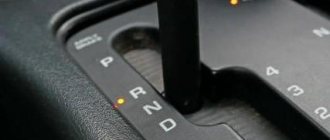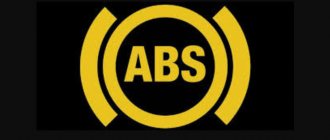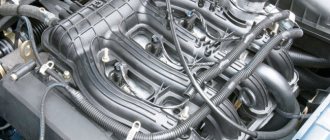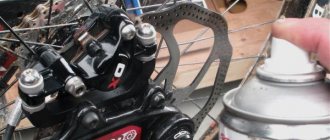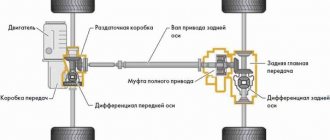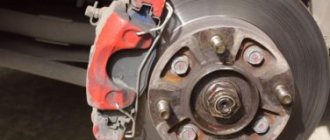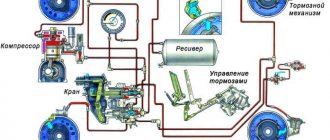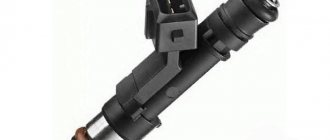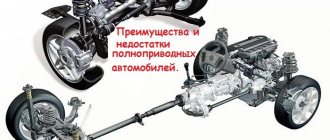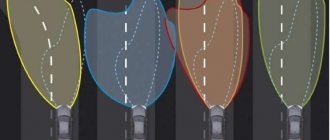KIA Ceed JD Norm Brichka › Logbook › Operation of the emergency braking warning system (ESS)
I can finally congratulate those from St. Petersburg on a more or less winter)
Today we will think a little and observe. So, we will talk about one interesting feature that everyone saw in the list of options when buying a car, this is the emergency braking system (ESS). Its essence lies in the fact that many of us know that during emergency braking, the hazard warning lights turn on.
More than once I have come across posts from people about “emergency” braking, with abs, with a squealing squeak, and the emergency lights do not turn on. Well, and the subsequent indignation about the operation of this system and its uselessness in the end.
But let's figure it out, what is emergency braking? Emergency braking is a control technique used to stop a car in critical situations associated with a lack of time and distance, and its main task is to stop in a minimum time and while covering a minimum distance.
Now let's figure out when ABS turns on? Only in emergency situations and only during emergency braking? Of course not. ABS can also work during normal standard braking, let's say there is ice under the snow or just compacted snow, because the system is designed to help us drive the car always and everywhere, and not necessarily in an emergency situation. And why immediately frighten others with emergency lights because of this?)) And the ESS will turn on only when the braking is truly abnormal. Today I had the opportunity to test it in action and feel the benefits of it.
Returning from school in the evening, there was an unpleasant moment at the intersection of Dalnevostochny Avenue and Telman Street. I was moving in the far left lane along Dalnevostochny towards the street. Dybenko at the green light, and at that time one impatient villain was turning from the opposite direction towards Thälmann, okay, when they just stick their nose out, and then he rolled completely into my lane, and fell into a stupor and stopped, the distance between us was about 40 meters, my the speed is about 80 km/h (22 m/s), well, you already understand what I mean. On a winter road the task is impossible, but I decided to slow down since it was not possible to go to the right, I would rub the Sportage’s nose.
And now the best part. Braking with ABS, that is, all the way to the floor, or catching, as they say in the morning useful tips, “the edge of turning on ABS and under no circumstances pumping the brake pedal as without ABS” was neither the point nor the time when everything takes about 2 seconds. ABS does not work instantly, so there are fractions of a second to get the maximum braking effect, and we began to get it with quick, sharp, intense pushes of the pedal all the way, thereby getting the wheels locked/unlocked with a high frequency, which is essential slowed down, but not to 0, and it seemed that an impact, albeit not a strong one, could not be avoided, but at that moment I just noticed that the emergency lights were blinking, and in the right side mirror the Sportage sharply went to the right, thereby giving me room to go around this same villain who rolled out. After the detour, a not deep dynamic skid followed,
and again, a non-standard “gas-brake” braking technique to pull the car out.
After all the action, I stopped on the side of the road to catch my breath and make sure that I didn’t hit anyone anywhere, I noticed that the emergency lights blinked for about 15-20 seconds and turned off. Bottom line: ESS works, and it really works in emergency situations and when the brakes are not working properly. The Sportage driver also stopped to ask if everything was normal (special thanks to him for his reaction), and drew attention to the fact that it was the emergency lights that suddenly blinked
helped him react to the situation and quickly move to the right.
Well, basically, that’s all, a small observation from operating experience. I may not have discovered America, but I think this information will be useful to some.
Peace, snow, winter and New Year to everyone) And fewer such villains on the road) Thank you for your attention! Stay on the air, it will be interesting soon!
ESS Emergency Brake Warning System
Modern cars are constantly being equipped with a certain set of functionality. These include the ESS emergency braking warning system. By the way, not all car enthusiasts know about such a system. By the way, it is not installed on all cars.
What do you mean by emergency braking? From the point of view of the Traffic Rules, this is a sharp decrease in the speed of a vehicle in emergency or other unforeseen situations on the road while driving. In driving practice, the most common situations when the brake pedal suddenly goes “to the floor” are:
- sudden braking of the vehicle in front;
- the appearance of obstacles, interference, damage on the road surface that were previously invisible (the situation is not uncommon for Russian roads);
- vehicle malfunction (engine stalling, control problems, tire breakdown, etc.);
- emergency situation in the cabin (fire, deterioration in the health of the driver and passengers, problems with pets);
- creation of emergency situations.
In the practice of every driver, emergency braking situations have occurred more than once. Such situations are especially dangerous in conditions of heavy traffic at high speeds (on highways, in megacities). In this case, a dozen or two cars can be involved in an accident. In case of emergency braking after a driver following, it takes at least 0.3 seconds to make a decision. When traffic density is high, this is usually not enough.
The emergency braking warning system is more effective for vehicles located further away from the one braking. First, they realize that something is wrong on the road. Secondly, they probably start to slow down in advance.
How the rear driver warning system works
As a participant in road traffic, every driver sooner or later encounters unforeseen situations, one of such situations is an emergency situation when the car driving in front of you begins to brake sharply. There may be a lot of reasons for such actions, but it is important for you not to crash into this rapidly approaching object, and our brain cannot always clearly respond to such an unexpected development of events.
For this purpose, an emergency braking and warning system built into cars was invented.
How does the Brake Warning system work?
First of all, I would like to point out that different vehicles use different types of warning lights. These are standard car light signals, but operating in a non-standard mode, namely:
1. Rapid flashing of the hazard warning lights.
This warning method was chosen by the manufacturers of FORD, OPEL, BMW, and some French. For cars with good LED turn signals, this flashing is quite effective. For cars with conventional incandescent lamps, frequent blinking is perceived much worse. In addition, in many countries, hazard warning lights while driving are perceived as a sign of greeting or gratitude.
2. Flashing stops.
Used on some Volkswagen and Volvo cars. Feet are more visible. But in driving practice, many motorists often brake in a jerky manner, so such blinking may not be regarded as an emergency brake signal, but simply as a “game” with the brake pedal.
3. Simultaneous flashing of emergency lights, stop lights, repeaters, and fog lights.
This massive attack is used in some Mercedes and other luxury cars.
In my opinion, this is the most “attractive” (in the full sense) type of warning about an emergency braking situation.
ESS File Types
ESS Master File Association
.ESS
| File format: | .ess |
| File type: | The Elder Scrolls Saved Game |
The ESS file saves game progress, a file that stores the player's gameplay related to The Elder Scrolls (TES) first-person role-playing games, including Skyrim (TES 5), Oblivion (TES 4), and Morrowind (TES 3).
| Creator: | Bethesda Softworks |
| File Category: | Game files |
| Registry key: | HKEY_CLASSES_ROOT\.ess |
Software that opens The Elder Scrolls Saved Game:
Skyrim VR, developed by Bethesda Softworks
Compatible with:
| Windows |
The Elder Scrolls IV: Oblivion, developed by Bethesda Softworks
Compatible with:
| Windows |
The Elder Scrolls III: Morrowind, developed by Bethesda Softworks
Compatible with:
| Windows |
| Xbox 360 |
| Xbox One |
Other ESS file associations
.ESS
| File format: | .ess |
| File type: | EasySpreadsheet Spreadsheet |
A standard spreadsheet format associated with EasySpreadsheet, a part of EasyOffice software that was developed by E-PRESS Corp.
| Creator: | E-Press Corporation |
| File Category: | Table files |
Programs that open EasySpreadsheet Spreadsheet files:
EasyOffice, developer - E-Press Corporation
Compatible with:
| Windows |
| iOS |
.ESS
| File format: | .ess |
| File type: | EXP Style Sheet |
Saved styles are created in EXP, a scientific word processor used to produce technical documentation for the Microsoft Windows system.
| Creator: | Symbol Dynamics LLC |
| File Category: | Text files |
Programs that open EXP Style Sheet files:
EXP; The Scientific Word Processor, developed by Symbol Dynamics LLC
Compatible with:
| Windows |
.ESS
| File format: | .ess |
| File type: | Ekahau Site Survey Binary Container |
The ESS file is associated with Ekahau Survey Site, a software tool for IT managers, wireless engineers and Wi-Fi specialists who plan, implement and troubleshoot Wi-Fi networks. ESS files are binary containers that contain all design data related to a wireless site survey.
| Creator: | Ekahau |
| File Category: | Data files |
Programs that open Ekahau Site Survey Binary Container files:
Ekahau Site Survey (ESS), developed by Ekahau
Compatible with:
| Windows |
| Mac |
.ESS
| File format: | .ess |
| File type: | eSignal Symbol Search File |
Character search for data files associated with, the client will solve the trading software for Microsoft Windows used to analyze market data in real time.
| Creator: | Interactive Data Corporation |
| File Category: | Data files |
Programs that open eSignal Symbol Search Files:
eSignal, developer - Interactive Data Corporation
Compatible with:
| Windows |
How the emergency braking warning system is implemented
In the simplest version, only a conventional acceleration sensor (G-sensor) is sufficient to implement the system. Most manufacturers duplicate the readings of this sensor with other signals, which include:
- accelerator pedal sensor;
- signals from the ABS unit;
- vehicle speed sensor;
- acceleration sensor (G-sensor);
- Spider ESS – emergency braking sensor (special sensor);
- information from the engine control unit;
- signals from the automatic transmission control unit.
Thus, the ESS system online collects information about speed, acceleration, ABS operation and, in the event of emergency braking, almost instantly transmits a control signal to the lighting control unit, which turns on the corresponding indication.
Automatic emergency braking
A device with more efficient quality indicators, working in conjunction with ESC and adaptive cruise control. Research conducted by Euro NCAP found that installing a system of this type reduces the number of accidents by 38%.
Based on information received from cruise control radars and video cameras, the distance between the road and the nearest vehicle is recognized and, if necessary, the speed is automatically reduced regardless of the driver’s actions. After a notification from the ESC sensors, an emergency stop of the machine occurs.
Additionally, the device warns the driver of danger with a light and sound alarm and activates passive safety mechanisms.
Self-installation of the ESS system
If your car does not have an ESS system, do not despair (just kidding). It can be installed as additional equipment. A set of additional equipment is usually called the Spider ESS type. It looks something like this.
It is connected via wiring to:
- emergency electrical equipment;
- stop chains;
- "mass" of the car;
- +12 V (preferably through the ignition switch contact group).
The connection diagram (for Mobile Electronics Spider ESS) is shown in the figure below.
Connecting such a device yourself is easy, even for an inexperienced electrician. The main thing is not to mix up the power circuits, so as not to damage the standard equipment of the car, strictly follow the instructions supplied with the additional equipment. After connecting the device, it usually requires adaptation. In the case of Mobile Electronics Spider ESS, the sequence of operations is simple:
- turn on the ignition;
- Press the brake 6 times (in 10 seconds);
- drive a car using emergency braking;
- Press the brake 5 times to save the settings.
Story
Cadillac Cyclone
One of the first cars to feature radar was the futuristic-looking Cadillac Cyclone concept car, introduced in 1959. Radars were located at the tips of its rocket-like wings and scanned the space in front of the car, warning the driver of emerging obstacles[10].
In 1995, a similar system began to be installed on the mass-produced Mitsubishi Diamante[11]. Using a laser radar (lidar), the system determined the distance to the car in front and, by controlling the engine, maintained a safe distance[12]. In 2000, the same system on the Toyota Celsior (Lexus LS) could already apply the brakes to maintain a safe distance[13]. And only in 2005, a system capable of completely stopping the car, if necessary, began to be installed on the Mercedes-Benz S-Class model[14].
ESS system performance
Personally, I believe that even if such a system reduces the likelihood of a traffic accident by even a hundredth of a percent, it is already effective. There are no precise data on the effectiveness of various ESS systems. Mercedes manufacturers claim that the introduction of an emergency braking warning system reduces the decision-making time of the driver behind a braking car by approximately 10-15%.
It is important that all drivers know that the flashing nature of the brake lights, emergency lights, reverse, etc. is nothing more than evidence of emergency braking. In addition, the efficiency of the ESS system is affected by:
- speed mode;
- road conditions;
- road surface condition;
- distance between cars;
- climatic factors.
Grade
The European Independent Committee for the Assessment of Car Safety (Euro NCAP) tested the autonomous emergency braking (AEB) systems of eight cars in 2013. Tests have revealed differences in the effectiveness of systems from different manufacturers, but in all cases they have proven their usefulness in real conditions. But it should be remembered, the conclusion says, that AEB is a driver assistance system that the driver should not rely on completely. In some difficult situations, the system is unable to completely protect the vehicle from a collision, but it does provide a significant reduction in vehicle speed at the moment of impact[20].
In the summer of 2020, “Behind the Wheel” journalists tested the autonomous emergency braking systems of nine cars of different price categories. They found that most systems had not yet reached a level where they could be completely trusted. But even in this state, their intervention in an emergency situation sometimes allows a collision to be avoided. So there is certainly some benefit from them[21][22].
Tests of autonomous emergency braking systems conducted by the American Automobile Association in the summer of 2020 showed a very wide range of results. All systems automatically applied the brakes when the driver did not do so, but they worked differently. Some systems were designed to avoid a collision, while others were designed only to reduce the severity of the accident. Although any reduction in speed prior to a collision provides great safety benefits to the driver, the driver must be clear that not all systems are designed to prevent a collision.[23]
What is ESS Brake Warning System and how does it work?
ESS (English: Emergency Stop Signal system) - the essence of this system is to warn drivers behind the car that the owner of the car is performing an emergency braking. In simple terms, when you sharply press the brake pedal to the floor, the emergency warning system is activated. Often, drivers have to deal with the fact that the car in front suddenly brakes. This case is quite common and is an integral part of the movement. The problem is that the driver behind the vehicle does not always correctly assess the situation and presses the brake pedal too late. The result is an accident. Car manufacturers have developed an ESS system that is activated in the event of emergency braking and warns drivers behind about a sudden maneuver.
ESS system - general concepts and characteristics
How does the ESS system notify other drivers? It's simple. When the brake pedal is pressed sharply, the emergency signals are automatically triggered and the turn signals (all) begin to “blink”. It turns out that the driver behind the car, seeing a car in front of him that continues to move and whose emergency signal has turned on, will know that an unforeseen situation has occurred ahead and it is necessary to move at a lower speed or stop. Each car manufacturer uses its own ESS alert system, which it believes is most understandable to car drivers in traffic. Eg:
- On cars such as KIA, BMW, Opel, Ford and many other car brands, turn signals are activated during emergency braking;
- On WV and Volvo – brake lights start flashing;
- Mercedes – the hazard warning light, brake light are automatically activated and the fog lights are turned on (the signal operates for about 15-30 seconds, depending on the driver’s maneuvers).
Thus, the manufacturer is trying to attract the attention of drivers in traffic that a dangerous situation has arisen on the road and they need to stop or slow down.
Forewarned is forearmed
In a stream of cars, most drivers, due to the monotony of the traffic, lose their vigilance and do not immediately notice that the car in front has begun emergency braking. On average, the reaction to such actions occurs in 0.5-1.5 seconds, which at a speed of 65 km/h, even with emergency braking, will allow you to overcome about 5-6 m. This distance is enough to crash into the car in front. Therefore, the presence of an ESS system is an excellent solution from manufacturers who take care of drivers and the safety of their cars. Like any other signals, the ESS system has proven itself well and has proven its worth on the roads. If the car ahead starts flashing its turn signals or brake lights, you should immediately react and brake. Perhaps this way you will save someone's life, or at least avoid getting into an accident.
The Vodi.su portal draws your attention to the fact that this system works not only in normal situations. Even in the process of getting out of a skid, the ESS system starts to work (when you press the gas-brake pedals).
After the vehicle comes to a complete stop or when traffic returns to normal, the warning lights will automatically turn off (this process takes 15-20 seconds).
Professional opinion
Despite the fact that the system has shown its worth and usefulness on the road, many domestic car owners will simply not understand this signal, since most cars simply do not have it. This aspect also applies to inexperienced drivers who have just begun to master the science of driving.
But, over time, car owners should get used to this innovation and will be able to appreciate the development of Western manufacturers who are concerned about the health of motorists and the good condition of their cars.
How ESS warns drivers behind you about emergency braking
Emergency braking of a vehicle is understood as a mode of sudden change (decrease) in speed in the event of an emergency or other unforeseen traffic situation.
p, blockquote 1,0,0,0,0 —>
p, blockquote 2,0,0,0,0 —>
Such braking is usually performed in the following situations:
p, blockquote 3,0,0,0,0 —>
p, blockquote 4,0,0,0,0 —>
- the appearance of traffic obstructions (potholes, cars parked in an emergency or moving inappropriately, road signs, etc.);
- sudden failure of vehicle systems (steering, suspension, transmission, engine);
- unforeseen situations in the car (deterioration of the health of the driver, passenger);
- emergency situations.
In such situations, the driver is usually able to make a decision within 0.3 seconds. During this short time, he does not have time to assess the situation that is developing behind his car.
p, blockquote 5,0,0,0,0 —>
Drivers of cars moving directly behind his vehicle must, in turn, almost instantly make a decision about the necessary maneuver.
p, blockquote 6,0,0,0,0 —>
Video is an example of how the ESS system works in a difficult traffic situation:
p, blockquote 7,0,0,0,0 —>
p, blockquote 8,0,0,0,0 —>
If the vehicle performing emergency braking is not equipped with the optional ESS warning system, the likelihood of an accident increases significantly.
p, blockquote 9,0,1,0,0 —>
How the ESS (Emergency Stop Signal) system works
p, blockquote 10,0,0,0,0 —>
The emergency braking warning system in its operating algorithm can use information received from the following sensors and units:
p, blockquote 11,0,0,0,0 —>
- accelerator pedal sensor;
- Sp >The result of the system is an additional light indication of rear light signals, as a result of which drivers behind moving cars receive information that the car in front has begun emergency braking. It is important that drivers are aware of these warning signs.
p, blockquote 12,0,0,0,0 —>
For various cars, emergency brake lights are organized using the following methods:
p, blockquote 13,0,0,0,0 —>
1. Frequent flashing of the hazard warning lights.
p, blockquote 14,0,0,0,0 —>
This alarm system works in cars made in France, Ford, Opel, BMW, Japanese and Korean manufacturers. Its disadvantage is that the same type of signaling may be perceived in some countries as a greeting to drivers, an expression of gratitude or an invitation to overtake.
p, blockquote 15,0,0,0,0 —>
2. Car brake lights flashing
.
p, blockquote 16,0,0,0,0 —>
If the flashing occurs at a precise frequency (not as in cases of driver braking), then the driver behind the moving vehicle should be aware that the vehicle in front has begun emergency braking. However, if there is insufficient distance between cars moving at high speed, the driver cannot always assess the frequency of flashing brake lights and have time to make an appropriate decision. This alarm system is used in Volvo and Volkswagen cars.
p, blockquote 17,0,0,0,0 —>
3. Simultaneous activation of stops, emergency lights and fog lights
.
p, blockquote 18,1,0,0,0 —>
This type of warning alarm is used in Mercedes cars.
p, blockquote 19,0,0,0,0 —>
p, blockquote 20,0,0,0,0 —>
At a glance (verbatim) there is a warning type of information about emergency braking. It is no coincidence that it is used on premium cars.
p, blockquote 21,0,0,0,0 —>
Self-installation of the ESS system
p, blockquote 22,0,0,0,0 —>
If the vehicle does not have an ESS system, the optional Spider ESS equipment can be installed.
p, blockquote 23,0,0,0,0 —>
p, blockquote 24,0,0,0,0 —>
It is connected via wiring to:
p, blockquote 25,0,0,0,0 —>
- brake light circuits;
- electrical equipment of emergency signals;
- "ground" (common wire);
- +12 Volt power supply.
The connection diagram for the Mobile Electronics device is shown in the figure:
p, blockquote 26,0,0,0,0 —>
p, blockquote 27,0,0,1,0 —>
Activation and configuration of additional equipment is carried out in the following sequence of operations:
p, blockquote 28,0,0,0,0 —>
- the ignition is turned on;
- within ten seconds, press the brake pedal six times (during activation, the hazard warning lights are activated;
- a check run with emergency braking is carried out;
- Pressing the brake pedal five times saves the settings.
The sensor is deactivated automatically (but not less than two seconds after activation).
p, blockquote 29,0,0,0,0 —>
There are additional ESS system devices from other manufacturers.
p, blockquote 30,0,0,0,0 —>
Notes
- ↑ 123
Autonomous emergency braking system (Russian). EURONCAP. Retrieved October 23, 2020. Archived June 6, 2020. - Automated Emergency Braking (AEB) European Transport Safery Council. Retrieved October 23, 2020.
- Automatic Emergency Braking (English). US Department of Transport. Retrieved October 23, 2020.
- Collision Mitigation Brake System (CMBS) Description - Overview (English). Honda Techinfo. Retrieved October 28, 2020.
- Sachkov Maxim.
Large test of cars with automatic braking system. Part 2. AMERICA IS CATCHING UP (Russian). Behind the wheel (June 1, 2020). Retrieved October 23, 2020. Archived November 12, 2020. - Predictive Emergency Braking System (English). Bosch. Retrieved October 25, 2020. Archived June 6, 2020.
- Reduced collision risk with Scania AEB system. Responsibility always rests with the driver. Scania AB (5 November 2013). Retrieved November 5, 2020. Archived January 1, 2020.
- Toyota Safety Sense (English). Toyota USA. Retrieved October 29, 2020. Archived June 27, 2020.
- Delphi Collision Mitigation System (English). Delphi Automotive. Retrieved October 28, 2020. Archived April 9, 2017.
- Bill Bowman.
The Two Lives of the Cadillac Cyclone Concept Vehicle. GM Heritage Center. Retrieved October 27, 2020. Archived December 31, 2020. - Diamante 1995 (English). Mitsubishi Motors Corporation. Retrieved November 2, 2020. Archived November 2, 2020.
- Mitsubishi Motors Develops "New Driver Support System" (English). Mitsubishi Motors Corporation (December 15, 1998). Retrieved November 2, 2020. Archived October 28, 2020.
- Technical Development. Electronics Parts (English). Toyota Global Weight. Retrieved October 27, 2020. Archived June 20, 2017.
- Driver assistance systems: Intelligent co-pilots (English). Daimler Media. Retrieved October 28, 2020. Archived October 28, 2020.
- COMMISSION REGULATION (EU) No 347/2012. implementing Regulation (EC) No 661/2009 of the European Parliament and of the Council with respect to type-approval requirements for certain categories of motor vehicles with regard to advanced emergency braking systems. Access to European Union law (16 April 2012). Retrieved October 29, 2020.
- MEPs call for new car safety tech to be fitted as standard. European Transport Safety Council (October 12, 2017). Retrieved October 29, 2020.
- US DOT and IIHS announce historic commitment of 20 automakers to make automatic emergency braking standard on new vehicles. Insurance Institute for Highway Safety (March 17, 2016). Retrieved October 25, 2020. Archived June 28, 2017.
- About our tests. Front crash prevention tests Insurance Institute for Highway Safety. Retrieved October 29, 2017.
- Now Including AEB in the Rating. Euro NCAP (January 2014). Retrieved October 29, 2020.
- 2013 Autonomous emergency braking (Russian). EuroNCAP. Retrieved November 4, 2020. Archived June 6, 2020.
- Sachkov Maxim.
Auto-stop: a large test of cars with an automatic braking system (Russian). Behind the wheel (June 1, 2020). Retrieved October 23, 2020. Archived March 29, 2020. - Sachkov Maxim.
Large test of cars with automatic braking system. Part 2 (Russian). Behind the wheel (June 1, 2020). Retrieved October 23, 2020. Archived November 12, 2020. - Erin Stepp.
Hit The Brakes: Not All Self-Braking Cars Designed to Stop. AAA Newsroom (August 24, 2016). Retrieved November 4, 2017. Archived July 6, 2020.
Efficiency
p, blockquote 31,0,0,0,0 —>
Undoubtedly, additional information about the nature of the car’s braking reduces the likelihood of creating and implementing an emergency situation, which reduces the number of road accidents.
p, blockquote 32,0,0,0,0 —>
It is very important that all drivers know the essence of the ESS system and warning lights, and have experience in effective braking or safe maneuvering in extreme situations.
p, blockquote 33,0,0,0,0 —>
In addition to the listed factors, the efficiency of the ESS system is influenced by:
p, blockquote 34,0,0,0,0 —>
- distance between moving cars (distance must be maintained);
- speed mode;
- road surface condition;
- road conditions;
- climatic conditions and other factors.
Not everyone knows what it means to brake with an engine and how to perform this action correctly.
How to choose a walkie-talkie for a car depending on your goals and routes.
Video - how the rear driver warning system works during emergency braking on a Mitsubishi ASX:
p, blockquote 36,0,0,0,0 —> p, blockquote 37,0,0,0,1 —>
Pneumatic stopper type
It is divided into:
- BA - BAS (Assist System);
- EBA (Emergency Brake Assist);
- fits on Volvo, BMW, Mercedes-Benz;
- AFU - installed on Peugeot, Citroën, Renault Group.
Hydraulic mechanism. This type of mechanism such as BA will create an extremely strong influence on the braking substance of the mechanism when exposed to heading and stable road surfaces.
What is included in this Brake Assist system?
- Electronic control panel. Stop communicator button. Regulator responsible for measuring the pressure in the brake pedal. Converter that counts the number of wheel revolutions.
Due to the sounds from the switches, the ECU turns off the hydromechanical pump of the ESC mechanism and increases the pressure on the brake device to the maximum level. In addition to the speed of pressure on the SBC brake lever, the power of pressure applied to the brake, road surface, direction of movement and other possible reasons are taken into account. Depending on certain criteria, the ECU develops maximum braking power to all wheels.
The BA Plus variation analyzes the distance to the vehicle ahead. If there is a threat of an accident, it gives a signal to the driver or increases the pressure on the brake pedal for him, which significantly reduces the risk of an accident.
ESS system
It often happens that the car driving ahead begins to brake quickly. There is nothing special here, because any vehicle is simply obliged to brake; this maneuver is an integral part of the movement. But the whole point of the situation is that, despite all the measures you have taken, the car in front continues to inevitably approach.
The reason for this is different braking, the first car brakes with all its might, the pedal is pressed to the floor, and you brake slowly and carefully, naturally, your braking distance will be longer. The ESS emergency braking warning system is designed to insure you against such situations, or rather, their dangerous consequences.
Electronic brake force distribution system
Doctors usually say that disease prevention is much better than treatment itself. In our particular case, blocking the wheels with the ABS system when braking will be the very necessary medicine (treatment). After all, the system begins to work only then and at that moment when the wheels are practically already sliding and on the verge of locking. The electronic brake force distribution (EBD) system is most likely a preventive measure and is intended only for safety (for prevention).
For both hard and light braking, not all wheels of the car require the same force from the braking system, since each wheel in the car experiences a different load when rotating.
Let's consider with you, friends, the most common braking scenario: - let's say we have a straight road in front of us on which we need to brake right in front of the stop line. In this case, when braking, the weight of the car shifts forward, so naturally the load on the front wheels will be greater. The heavier the wheels, the less risk there will be that they will lock. Thus, in vehicles without (EBD), the control valve installed in the hydrolytic system distributes more braking force to the front wheels, since the load on the front wheels becomes greater when the weight is shifted to the front of the car; it will take more effort to stop the front wheels than the rear wheels. Without electronic brake force distribution, braking force is distributed regardless of the weight shift itself, and is approximately the same on both the front and rear wheels.
In principle, this is an acceptable solution for optimal performance of the entire braking system. But still far from ideal. The thing is that many factors influence the weight balance of a car. For example, during sudden emergency braking, the weight of the car will sharply shift to its front part. Moreover, it is worth noting here that the weight shift itself will be much greater than necessary (than it should be). During turns, the weight of the car shifts in the opposite direction from the angle of the turn itself, which creates a certain risk of slipping of the wheels that bear less than that weight.
"EBD" is able to distribute the optimal required braking force to each wheel of the car. “EBD” is thus an extension of this anti-lock braking system. It is able to control the speed, acceleration, and deceleration of each wheel in order to accurately determine the speed of rotation of the bearing, as well as how much braking force is needed for optimal and safe braking of the machine.
This “EBD”, using electronic valves in the hydraulic system, can distribute more braking force precisely to those wheels that experience more severe loads.
Some systems of such electronic brake force distribution can also control the angle of rotation of the steering wheel as well as the speed of cornering, just in case, so that in the event of braking in these very conditions, the braking force is distributed correctly and in time for a safe stop. Also, after the car exits the turn, this system, taking into account the shift in the weight balance of the car body, itself optimally distributes all braking forces in the hydraulic braking system.
What is ESS
Emergency braking technology is designed to at least reduce the consequences of an accident that may occur, or not prevent it. That is, in a situation where you no longer have time to brake on your own, the automation takes control of the car and, guided by a number of additional parameters read from external sensors, controls the vehicle.
As a result of the program, the braking distance can be reduced by almost 20%, which in most cases is enough to prevent a collision and protect yourself and other road users from an accident.
Behind the letters ESS is a special technology that notifies cars behind you about your emergency braking. When the ESS system is triggered, the car turns on a visual alarm.
In other words, if not only the brake lights of the vehicle ahead, but also the hazard lights come on, it means that the situation near you is emergency, and the car is braking too sharply, almost on the verge of a foul. In such a case, you immediately need to do the same to avoid a collision.
Each of the well-known machine manufacturers produces ESS technology in its own way, and complements it with various sensors:
- Ford, Peugeout, BMW, Kia, Citroen, Mitsubishi, Opel, Hundai - turn on the hazard warning lights more frequently.
- Wolksvagen, Volvo - indicated by flashing brake lights.
- Mercedes - includes hazard warning lights, brake lights and fog lights.
The ESS emergency braking system can be of two types:
- helps with emergency braking initiated by the driver;
- activates slowdown on its own.
ESS File Summary
Trc
We have seven existing software programs associated with ESS files (usually software from Bethesda Softworks known as Skyrim VR), and they can be categorized under the five main file types. Traditionally these files are in The Elder Scrolls Saved Game format.
Most ESS files are Game Files, but they can also be Spreadsheet Files or Text Files.
You can view ESS files using the Windows, Xbox 360, and Xbox One operating systems. They are typically found on desktop computers (and some mobile devices) and allow you to view and sometimes edit these files.
The popularity rating of ESS files is "Low", which means that these files are rare.
Fully automatic braking system
This ESS system is much smarter and more thoughtful than the one described above, here all the work is done automatically, even if the driver is completely unoriented and fails to at least start braking in time, the system will take control into its own hands and stop the car in time.
A car equipped with a fully automatic ESS system is equipped with cameras and radars that monitor the car moving in front of you. When it starts to brake too sharply (urgently and without important reasons), the automatic system instantly works and slows down the car, insuring it from a collision.
Advantages and disadvantages
The main advantage of Brake Assistant is significant assistance to the driver in the event of an unforeseen and dangerous situation. The system is most effective at speeds up to 30 km/h.
Such equipment, even if it does not have time to completely stop the car, warns the driver in advance and significantly reduces the speed of the car in the event of a collision.
The disadvantages include:
- when driving 40 km/h. and the system does not have time to stop the car completely;
- the system’s reaction only to stationary and moving traffic in the same direction;
- the system’s response to vehicles preparing for a maneuver ahead and moving in the adjacent lane.
What is the effect of the emergency braking system
As we wrote earlier, it is quite difficult to determine that the car in front has begun to brake too sharply. It may take an average of 0.3 seconds for a person to understand that they won’t be able to brake in time. If a car is moving at a speed of 60 km/h, during this time the car will travel more than four meters.
And these four meters may turn out to be critical; if we had managed to brake a little earlier, the collision most likely would not have occurred. Therefore, the use of the ESS emergency braking system on cars, while the signaling organs (hazard lights) notify about the active mode, has a beneficial effect on road safety.
Brake Assist
In stressful situations, the driver may apply too little pressure to the pedal. This special device has been developed to improve braking efficiency.
The basis of impact and behavior in emergency situations differs from system to system. Based on this parameter, two types of devices can be distinguished.
Pneumatic
Used on cars equipped with ABS. It includes a speed meter that controls vibrations of the vacuum converter rod, an electromagnetic rod drive and a control unit (ECU).
Extraordinary circumstances in which the actions of the “assistant” are necessary are determined by the speed of oscillation of the vacuum converter rod. In those cases when the pedal is acted upon smoothly, the device does not operate without sharp pressing. If the amplifier rod begins to move at a speed of more than 9 cm/sec., the control device sends a pulse to the computer. The electromagnet is activated, pressing the rod to the maximum. The system is activated and the car stops moving.
ABS does not turn off when Brake Assistant intervenes, and the wheels do not lock.
Hydraulic
In this version, Brake Assistant works by using ESC elements to stabilize the situation and consists of:
- pressure indicator in the brake system;
- wheel speed and vacuum booster vacuum meter;
- stop command switch;
- ECU.
When impulses are received from the indicators, the ECU turns on the ESC hydraulic pump, which increases the pressure in the brake system to the maximum level.
